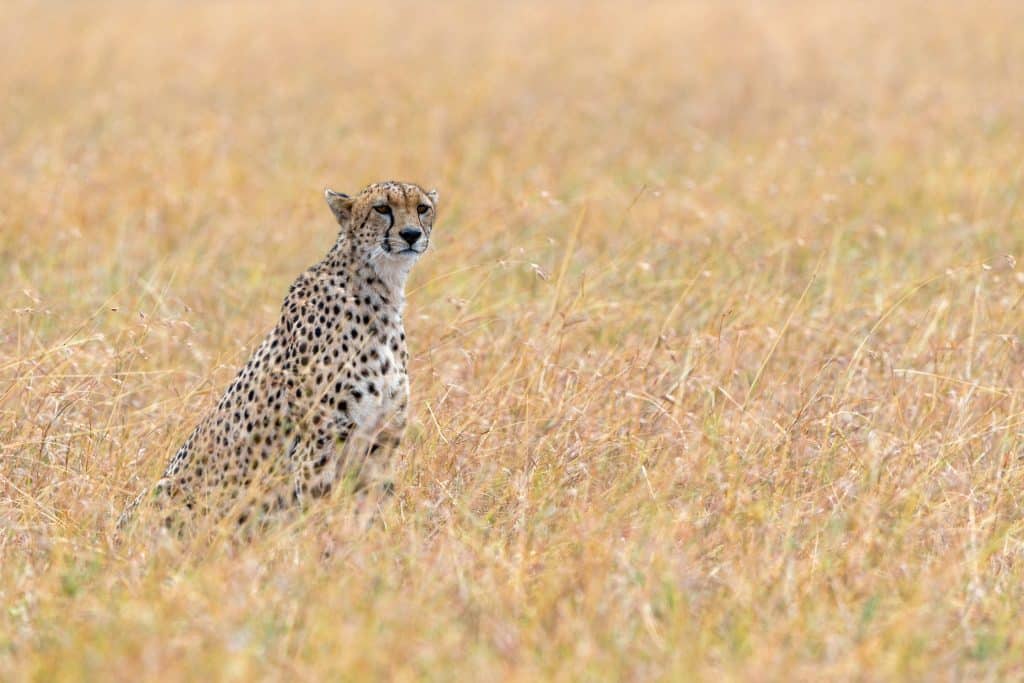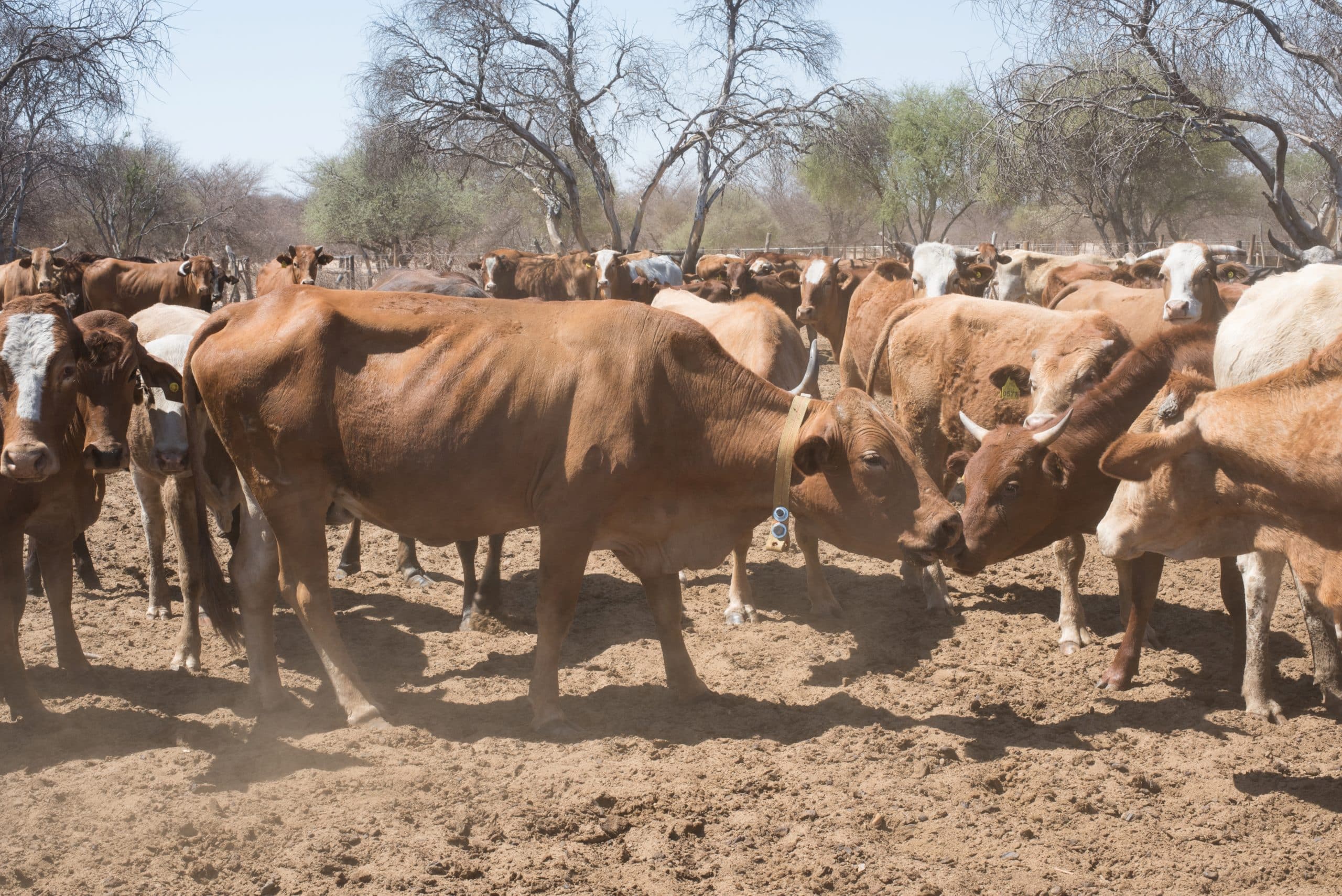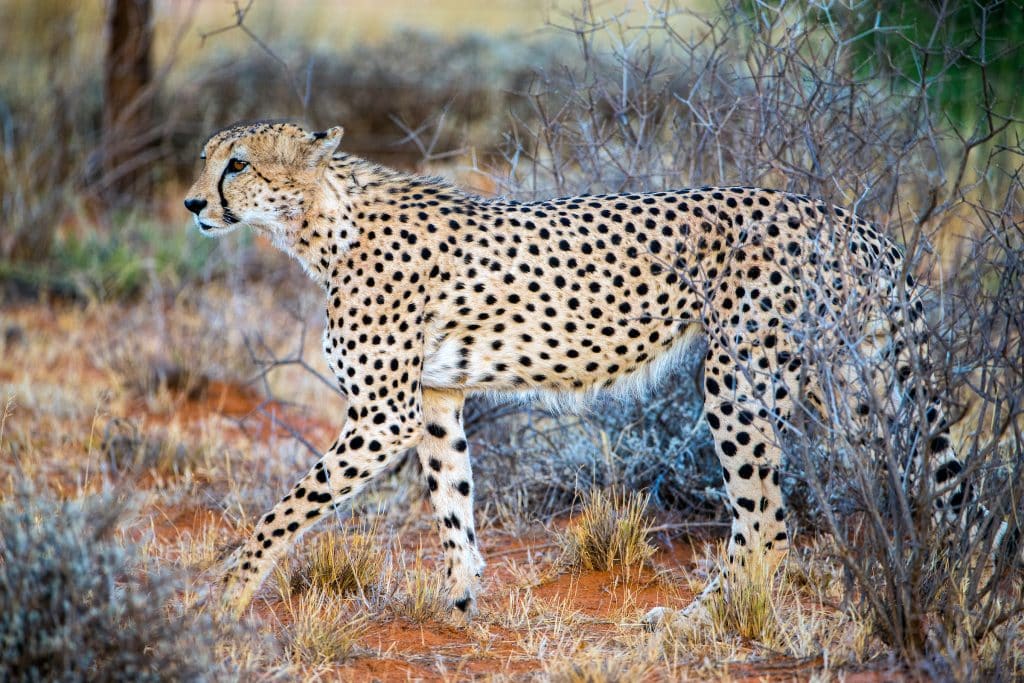The cow’s ear swatted away a fly above its bright orange GPS collar, sunlight glinting across the screen of the credit card-sized device attached to it. Throughout Africa, conservationists working near pastoral communities fit carnivores like cheetahs and lions with GPS collars, as tracking their movements helps prevent livestock predation. In New Xade, Cheetah Conservation Botswana (CCB) and their partners are trying something new—instead of just collaring predators, they’re collaring the livestock. Tracking the movements of cattle tells CCB where and when carnivores are hunting them, providing valuable data to help CCB reduce livestock predation and promote coexistence in this key cheetah habitat.
New Xade lies between Central Kalahari Game Reserve and Kgalagadi Transfrontier Park in Botswana. This is CCB’s target area—a vast landscape linking cheetah populations in both protected areas and providing connectivity for cheetahs in neighboring Namibia and South Africa. Some of the highest densities of cheetahs in the world are found here, as are high levels of human-wildlife conflict. Although most livestock predation comes from lions, leopards, and painted dogs, some pastoralists in New Xade don’t know which species to blame. They just find the remains of their cows or sheep and blame all predators, including cheetahs. CCB has alleviated human-wildlife conflict throughout Botswana’s sprawling Ghanzi District, where New Xade is located, for over 20 years. Upon discovering that New Xade’s community needed more support, CCB interviewed more than 70 of their farmers to determine what safety methods they employed for their herds. While most did secure their herds in enclosures at night, some stragglers would inevitably get left behind; the farmers feared venturing into the bush at night to retrieve their missing livestock, often finding their carcasses days later.
To help farmers avoid losing their animals, CCB collaborated with peer groups, veterinarians, and visiting master’s students to begin GPS-tagging cattle in New Xade. These tags transmit near-real-time movement data to both the farmers and CCB day and night. An alert is sent if a cow’s activity increases dramatically or stops entirely, indicating danger. CCB also convinced many farmers to begin counting their livestock daily, as opposed to once or twice a year, to quickly determine if any are missing at the end of each day. If so, then a team of community rangers, which CCB also helped organize, are sent out to patrol the pastures on horseback and round up stray cattle at dusk before carnivores can find them.
Inevitably, some livestock may still be lost, but carnivores aren’t always to blame for such incidents—disease and injury can also be the cause. If a cow dies while out grazing, its tracking collar data is still useful. By alerting CCB in near-real-time, they can locate the carcass quickly to determine the cause of death—and potentially clear cheetahs and other predators from blame—before scavengers disrupt those valuable clues.
These measures, along with deterrents like motion-triggered lights on enclosures and guard dogs for smaller livestock, are reducing conflict incidents in New Xade and helping make the area safer for livestock, cheetahs, and other predators. Responses from the farmers have been enthusiastic, with many impressed by the results of CCB’s interventions. Since piloting this tracking program and the dusk patrols, only one cow has been lost to painted dogs, and cheetahs have been absolved from any misplaced blame.
With plans to deploy more cattle tracking collars and adapt the project, CCB’s new approach to address an old problem is creating a safer environment for all who reside in this important cheetah corridor.
Support Cheetah Conservation Botswana



